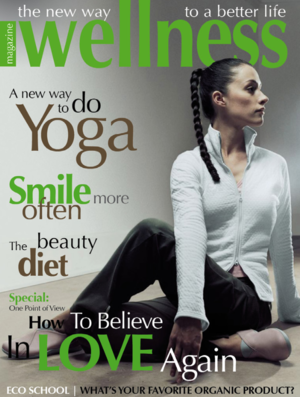Article
Breast cancer: before and after
October is breast cancer awareness month. Nearly 250,000 women will be diagnosed with breast cancer in 2016. Thankfully, early detection from successful screening has significantly reduced the risk of dying from breast cancer.

Part of this reduction is related to evidence from the Women’s Health Initiative published in 2002. This study suggested postmenopausal hormone usage increased the risk of breast cancer. Breast cancer is the second leading cause of cancer death in women, but these rates have been declining. At the present time, there are 2,800,000 breast cancer survivors in the United States. Breast cancer awareness month gives us an opportunity to reflect on this common malignancy, discuss ways of prevention, and educate regarding techniques of successful treatment.

All women should understand their risk of breast cancer. The average American woman has a 12% chance of developing breast cancer. Some have additional risks because of family history and the presence of certain breast cancer genes. Lifestyle choices, including diet and exercise, also affect breast cancer risk. Postmenopausal hormone treatment increases breast cancer risk, although the magnitude is small. Women who have a first-degree relative (mother or sister) who developed breast cancer before the age of 50 have an elevated risk. The presence of this family history nearly doubles the chance of developing breast cancer, even without the presence of inherited genes such as the BRCA gene. Some risks - such as genetic risk and bad luck - cannot be modified, so women should focus on the things they can change such as diet, exercise, and reducing alcohol consumption.
Proper diet is essential for healthy living. It is important to eat “Right, Light, and Organic” as much as possible. Excess weight results in additional estrogen formation from adipose tissue. This may contribute to breast cancer risk for postmenopausal women. Excess body weight in younger premenopausal women may not directly affect breast cancer risk; however, the link between body weight and breast cancer is complex. Certain observational studies have suggested eating a Mediterranean-style diet high in olive oil, tree nuts, fruits, and vegetables is related to a lower risk of breast cancer. But at this point, there is no specific dietary recommendation beyond minimizing excess calories and eating quality food.
Physical activity is related to breast cancer risk as well. The Women’s Health Initiative suggested that exercising up to 2-1/2 hours per week with a brisk walk could reduce breast cancer risk by 18%. The American Cancer Society recommends that women obtain 150 minutes of moderate exercise throughout the week. Recent evidence suggests that physical exertion for women in their 20s and 30s may reduce breast cancer risk later in life. It is important to teach our daughters the importance of proper dietary techniques and routine exercise.
In addition to understanding your personal risk of breast cancer, it is important to follow current cancer screening guidelines. There has been recent controversy about the importance of mammograms in women under the age of 50. Different scientific organizations have reviewed the same science and created different recommendations. Most oncologists recommend a yearly mammogram starting at the age of 40. The primary area of controversy is the ability of a mammogram to adequately detect early cancer in those under the age of 50. The mammogram is an excellent screening test, but it is not very effective in women with dense (or very glandular) breasts. Some women may need to be screened with breast MRI. This is a discussion to have with your health care provider. Additionally, if you have the BRCA mutation, or have a mother or sister with a history of breast cancer, you may benefit from a visit with an oncologist to discuss risk reduction techniques beyond proper eating and exercise. There is controversy regarding the role of the routine self-breast exam. Although it is difficult to prove that this technique is an effective way to detect early breast cancer, it is nonetheless important for women to periodically examine their breasts and learn how they feel so that changes can be reported. If you find a breast lump, bring it to the attention of your provider and they will order an imaging study such as a mammogram or ultrasound. None of these imaging tests can completely rule out the presence or absence of cancer, so if the lump does not disappear, a biopsy will be needed.

There are many reasons why breast cancer can develop despite following healthy living recommendations. Sometimes after your screening mammogram, you may be asked to return for additional mammographic images. If an abnormality persists, an ultrasound may be ordered. This indicates that something abnormal has been seen. It is natural to develop anxiety if this happens, and this stress is typically unavoidable. If a suspicious abnormality is noted, a biopsy will be obtained. While your physicians work as quickly as possible to get the answer, it may take up to a week to get results from a biopsy. If you are diagnosed with breast cancer, it is important to take a deep breath, collect your thoughts, and develop a plan. Contact your primary support person and ask them to come to your first few appointments. The next step is a referral to a surgeon. During this time it is important to remember a majority of breast cancers are early stage and are treated with the intent to cure. Modern culture teaches us that cancer is typically a death sentence. But there are 2,800,000 women who are breast cancer survivors living a healthy active lifestyle. Once the dust settles, it is important to start writing down your questions.
When you visit your oncologist here are some of the questions you might want to ask.
o What type of breast cancer do I have? Is it sensitive to estrogen? Is it HER-2 positive?
o What is the stage of cancer? This is a number between 1 and 4. Most breast cancers are stage I and small. Stage II cancers are tumors larger than 2 cm or a tumor that has lymph nodes present.
o In addition to surgery, what other treatment is needed? If you plan on lumpectomy you will also need radiation. If you prefer a mastectomy radiation may not be needed.
o Will I need chemotherapy? Generally, about 30% of women with the breast cancer will be treated with chemotherapy. Those with stage 3 or 4 frequently require chemotherapy.
o Do I require an Oncotype test? This is a special genetic test which helps your oncologist further understand the risk of your tumor.
o What can I do to prevent relapse?
Survivorship is the period of time that starts after initial breast cancer treatment. It is important to understand the benefits of healthy living including proper diet, weight management, and exercise after a breast cancer diagnosis. Good science proves that women who lose 5 pounds after a breast cancer diagnosis can cut the risk of relapse by 25%. If you had excess body weight before the cancer diagnosis, this will become an important part of your survivorship plan. I recommend at least 75 minutes of moderate exercise weekly.
Dietary changes after a breast cancer diagnosis have been studied, but the outcomes have been inconsistent. As always, I recommend women eat “Right, Light, and Organic” and attempt to follow a Mediterranean style of eating including fruits and vegetables, olive oil, tree nuts, fish, and poultry.
There has been some evidence suggesting tobacco smoke may increase the risk of breast cancer relapse. There is no firm connection between tobacco use and breast cancer. Evidence from the California Environmental Protection Agency suggests secondhand smoke may be related to cancer development in premenopausal women. Of course, there are many other reasons not use tobacco, and so avoidance just makes sense.

There have been many studies attempting to link supplement consumption to reducing breast cancer risk. In general, the studies have not discovered a link. Vitamin D is commonly taken after a breast cancer diagnosis. There is no evidence linking vitamin D deficiency to the development of breast cancer, but low vitamin D levels are commonly found when breast cancer is diagnosed. Many oncologists monitor vitamin D levels and replace them when they are low. At the present time, there are 8 clinical trials investigating the relationship between vitamin D and breast cancer. My general approach is to recommend 5000 units of vitamin D for individuals who have low levels. For a routine replacement, I typically recommend 2000 units of vitamin D during the summer months and a higher amount during the winter months.
VitaFend vitamin D 5000 units is an excellent source of this vitamin. Our product is all natural, free of animal byproducts, and enclosed in a vegetarian capsule.
Observational studies have suggested that certain dietary patterns tend to be associated with lower breast cancer occurrence. Diets rich in green tea consumption may be protective against several cancer types including breast cancer. The Mediterranean style of eating with its heavy emphasis on olive oil and diets possessing high amounts of turmeric both seem to be linked to lower rates of breast cancer.
With this in mind, I often recommend the VitaFend 3 pack.
This is a nice combination of our Olive leaf extract, green tea extract, and turmeric extract. This brings together my favorite natural ingredients that observational studies suggest may improve overall breast health.
About author

Bryan E. Martin MD has a busy Medical Oncology practice and gets to interact with the most amazing people. Patients that journey through a cancer diagnosis want all the help they can get. "I realize the importance of vitamins and supplements and am concerned about the poor guidance offered by standard medicine. VitaFend supplements are selected to reinforce the dietary benefits of healthy eating."
Photo courtesy of Marni freedigitalphoto.net; Vitafend
*The information available on ewellnessmag.com, including text, graphics, and other materials are for informational purposes only. Reliance on any information in ewellnessmag.com is at the user’s own risk. Sponsored product placement may appear in the article. The visitor of this website acknowledges that the information available on or through ewellnessmag.com is not and is not intended to be a substitute for professional medical advice. Copyright © 2016 Brawo Press, Inc. All rights reserved.
Share article











You must be logged in to add a comment ... → Log in | Register